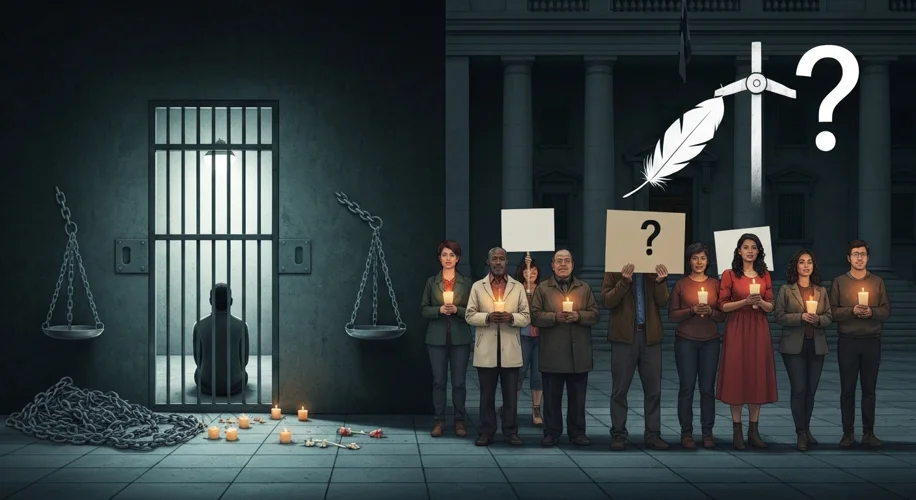The news arrives like a cold gust of wind: an ICE detainee found hanging in a detention facility. For many, it’s a jarring headline, a stark reminder of the human cost of immigration enforcement. But for those who delve into the echoes of the past, this tragedy is not an isolated incident, but a recurring motif in the long, often grim, history of holding those seeking a new life.
Immigration detention in the United States is not a modern invention. Its roots stretch back to the late 19th century, a period marked by burgeoning industrialization and a growing influx of immigrants eager to stake their claim in America. As the nation grappled with its evolving identity, the concept of border control began to solidify, and with it, the need for places to house those deemed undesirable or awaiting processing. Early facilities were often rudimentary, repurposed buildings or temporary structures, where conditions could be harsh and oversight minimal.
The landscape of immigration enforcement shifted dramatically over the decades. World Wars brought increased scrutiny and sometimes outright hostility towards immigrants from enemy nations. The Cold War era saw the detention of individuals suspected of communist sympathies. Each era, each geopolitical shift, left its mark on the system, shaping the types of individuals detained and the rationale behind their confinement. Through it all, the detention facility, in its various forms, remained a constant.
One cannot discuss deaths in custody without acknowledging the individuals caught within the system. They are not merely statistics; they are people with stories, families, and dreams. Consider the case of Gonzalo Garcia, a Mexican immigrant who died in a Brooklyn jail in 1888, his death attributed to neglect and the harsh conditions of his confinement. Or the countless unnamed individuals who perished in the early 20th century from diseases that spread rapidly in overcrowded and unsanitary holding centers. These early cases, though often lost to the broader narrative of American expansion, represent the foundational moments where the vulnerability of detainees became tragically apparent.
The mid-20th century saw further evolution. The creation of the Immigration and Naturalization Service (INS) and later the Department of Homeland Security (DHS) formalized many aspects of immigration enforcement. With this formalization came increased attention to detention numbers, but not always commensurate attention to the quality of care. Reports and investigations from the late 20th and early 21st centuries began to surface, detailing instances of suicide, medical neglect, and violence within detention centers across the country. These reports often painted a grim picture: overcrowded facilities, inadequate medical staffing, and a lack of proper mental health support.

The circumstances surrounding detainee deaths are as varied as the individuals themselves. Some deaths are the result of acute medical emergencies that go untreated or are mishandled. Others are the grim culmination of prolonged despair, leading to suicide. Still others are the result of violence, either from fellow detainees or, in rarer but more disturbing cases, from facility staff. The common thread is often a sense of powerlessness, a feeling of being adrift in a bureaucratic system with little recourse.
The consequences of these deaths ripple outwards. For the families left behind, there is the profound grief of losing a loved one, compounded by the often-difficult process of reclaiming a body and navigating legal and administrative hurdles. For the broader public, these incidents raise critical questions about the ethics and efficacy of immigration detention. Are these facilities truly serving their purpose, or are they places where human rights are compromised?
Analyzing these events requires a deep dive into the systemic issues at play. Critics often point to the privatization of detention centers, arguing that the profit motive can incentivize cost-cutting measures that compromise detainee welfare. Others highlight the lack of consistent oversight and accountability, allowing problems to persist for years without adequate intervention. The sheer scale of immigration detention, often holding tens of thousands of individuals at any given time, presents immense logistical and humanitarian challenges.

When a detainee is found hanging, it is not merely a news item; it is a historical echo. It calls to mind the long legacy of individuals who have suffered and died within the confines of immigration detention. It compels us to ask: what have we learned from the past, and are we doing enough to ensure that such tragedies are not repeated? The history of immigration enforcement is intertwined with stories of hope and opportunity, but also with the somber reality of lives lost in the pursuit of a better future.


